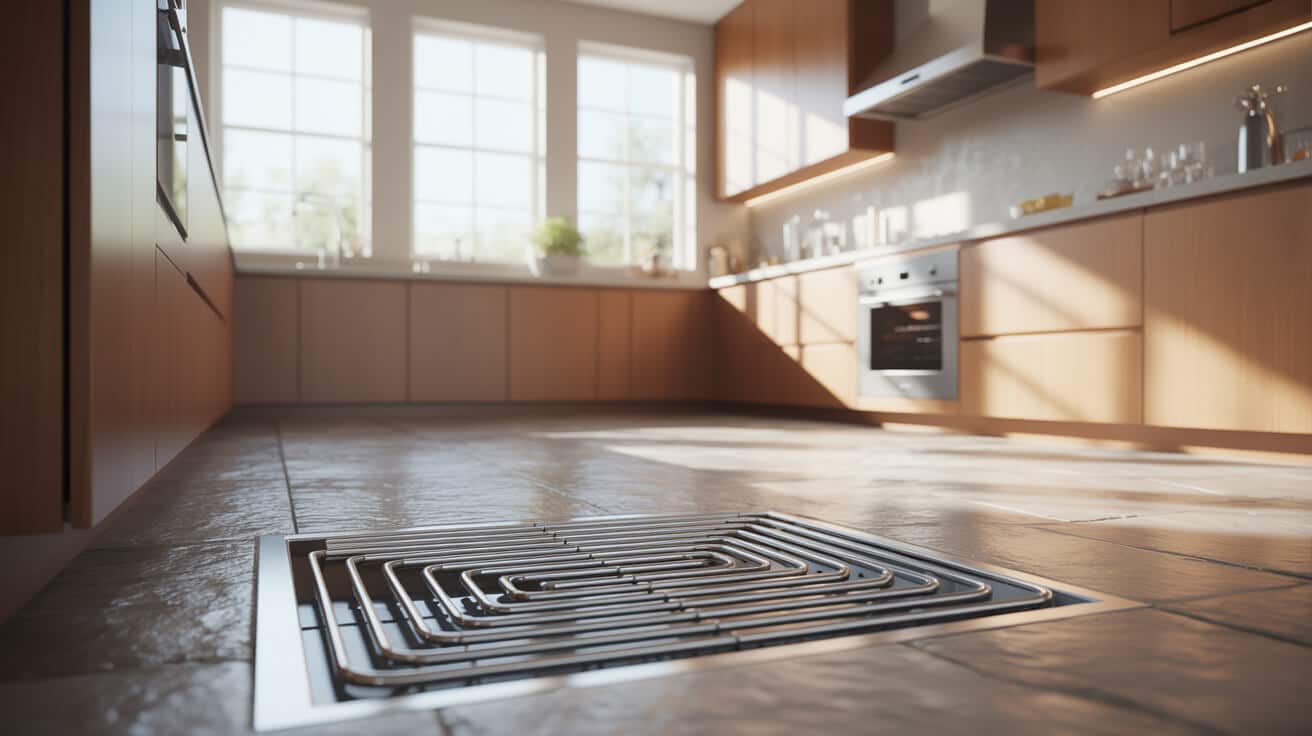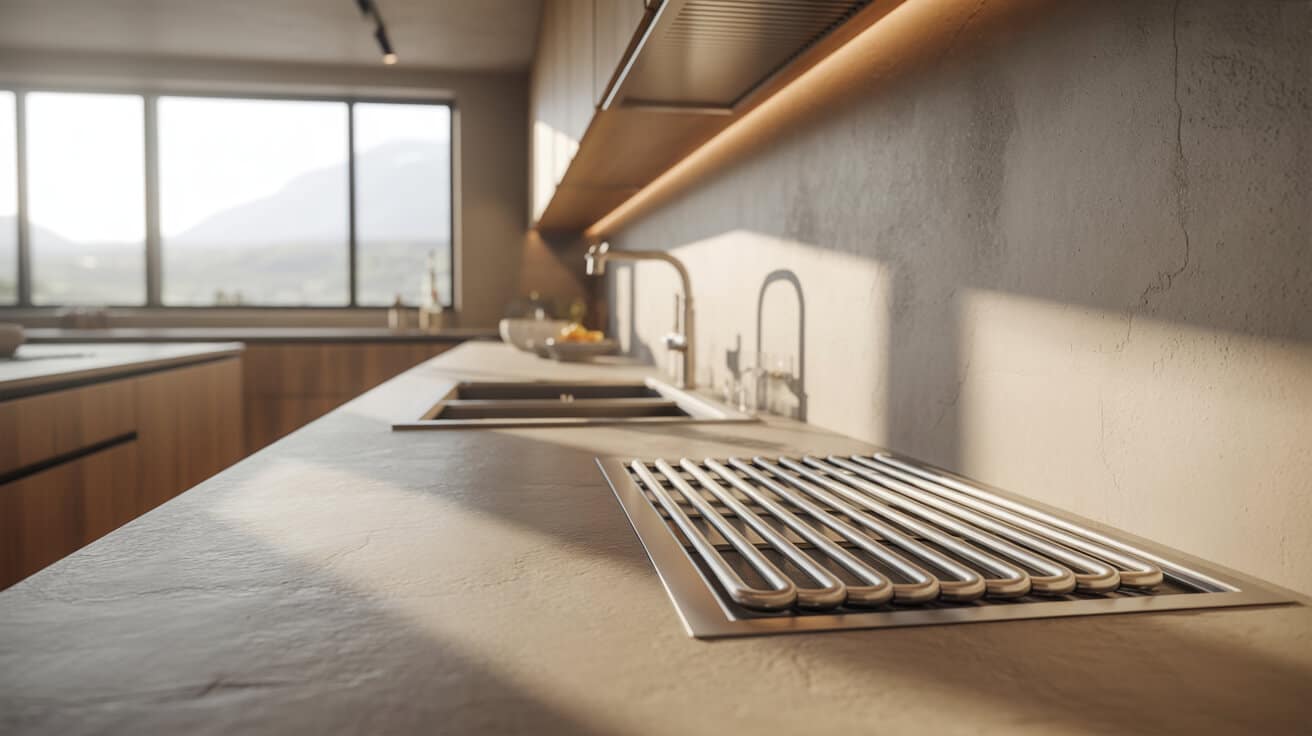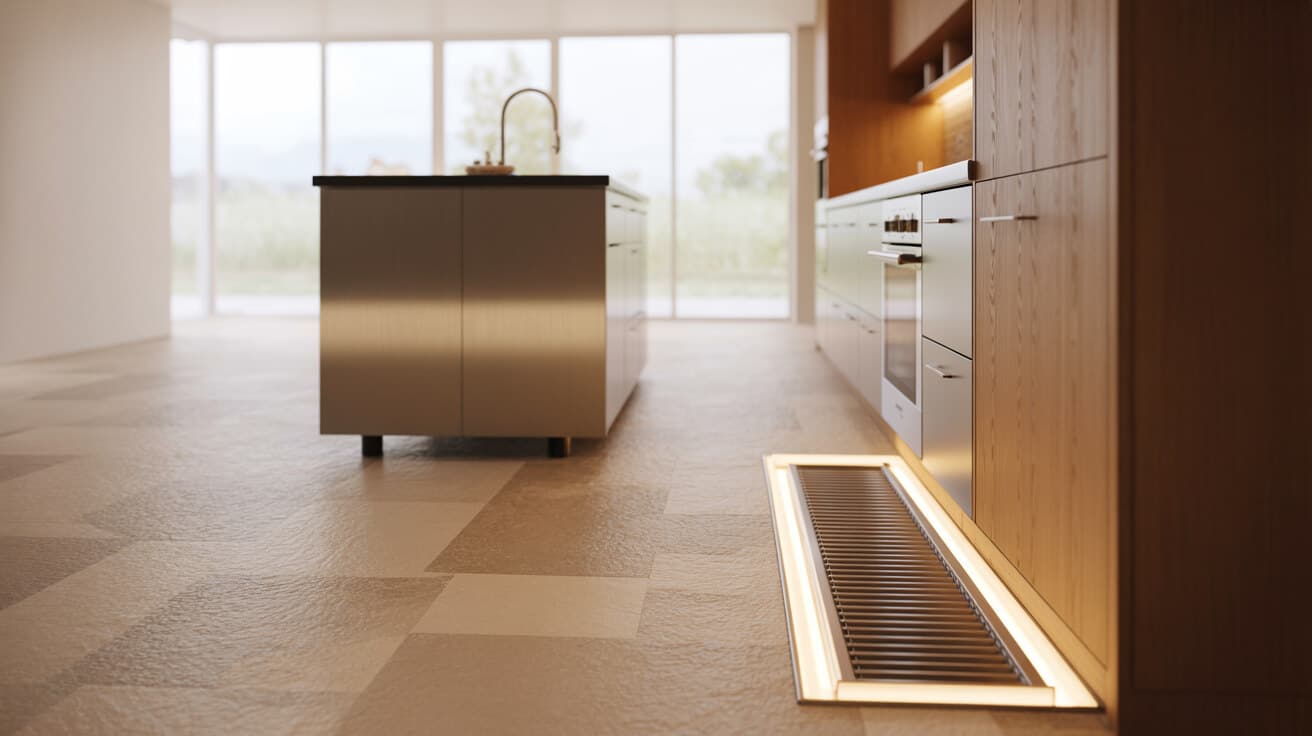The pursuit of even, reliable heat distribution not only defines high standards for building comfort but also impacts your energy management, property valuation, and the strategic positioning of your business or residential portfolio. Your understanding of this principle—and its direct ties to system design, regulation, and aftercare—reshapes how you choose, implement, and maintain any form of modern heating solution.
Uniform heat describes a performance criterion wherein a radiant flooring system produces minimal temperature variation—commonly defined as less than ±2°C across mapped floor zones—attributable to optimal planning, precise installation, and rigorous commissioning. The experience and expectation of evenly heated floors distinguish advanced underfloor systems from conventional radiators or uneven legacy solutions.
This performance trait is central both to regulatory frameworks and user satisfaction; it encapsulates health, energy, and investment priorities for homeowners, landlords, developers, and facilities managers. Your selection of a professional, standards-driven company like Plumbers 4U can be the determining factor between comfort and chronic dissatisfaction, especially when post-instal service quality and regulatory paperwork come into play.
Etymology or name origin
The term “underfloor heating” is derived from the words “underfloor,” defined as beneath the finished walking surface, and “heating,” the process of imparting or maintaining warmth. The phrase “uniform heat” is borrowed from the Latin “uniformis,” signifying even, consistent, or harmonious distribution, and entered technical language with the rise of controlled radiant heating designs. Historical references trace the idea of floor-based radiant comfort to Roman hypocausts and Asian ondol systems, indicating both functional ancestry and terminology development.
Overview / context
System distinctions
Underfloor heating exists in two principal modalities: hydronic (fluid-based networks of pipes) and electric (resistance wires in mats, cables, or foils). Both approaches aim to replace or supplement convective radiators by circulating warmth through large, planar surfaces. Hydronic systems typically feature intricate circuit layout and require integration with boilers, heat pumps, or thermal stores. Electric systems, in contrast, provide modularity and are often favoured in retrofits or space-limited scenarios.
Use-case scenario spectrum
Uniform heat has become an industry baseline in premium residential design, property renovations, open-plan developments, and commercial applications with stringent comfort requirements. Your attention to this standard increases as regulatory scrutiny and tenant, user, or buyer expectations intensify in the wake of higher energy costs and legal minimums for living quality.
Role of technical services
Plumbers 4U and equivalent niche providers combine system architecture, integrated controls, corrective maintenance, and monitored handover protocols to deliver and preserve your investment in engineered heat consistency.
History
Early precedents
Roman-era hypocausts and ancient Korean ondol floors embodied the primordial ambition for floor-based, ambient comfort. Both systems routed heat beneath floors—stone and clay in Korea, pillars and flues in Rome—focusing on expansive, even warmth rather than direct air heating.
Transition to industrial methodologies
The industrial era introduced metals and, later, plastics as new materials for pipework and mat elements, while portland cement and anhydrite screeds enabled mass-market implementation and repeatability in performance. The move from open fires to closed-loop hydronic systems paralleled the evolution of mechanical controls, balancing valves, and insulation grades, mirroring wider changes in civil engineering and building regulation.
Modernization and performance focus
Architectural and regulatory turning points—including the first appearance of EN 1264 in Europe and the codification of Building Regulations Part L (energy) in the United Kingdom—recast underfloor heating as a system accountable not only to subjective comfort but to demonstrable consistency, safety, and environmental criteria. The professionalisation of installation and the rise of independent testing, verification, and commissioning practices now position your company, or your service partner, as both a technical and regulatory stakeholder.

Concept / description
Mechanisms of heating transmission
Heat transfer in underfloor systems is mediated by a combination of radiation (from warm surfaces directly to ambient occupants and objects) and convection (from thermally influenced airflows above the floor).
- Hydronic systems: employ PEX, PB, or MLCP pipes embedded in screeds, floating floors, or overlay boards, with heated water supplied by mixing loops connected to boilers or heat pumps.
- Electric systems: employ resistance cables or mesh mats arranged beneath finish layers, controlled by room or floor-mounted thermostats.
Uniformity is a direct function of network topology (pipe/cable spacing and length), floor construction (insulation, screed quality, substrate condition), and the intelligence of zoning and sensor networks.
Performance dynamics
Effective uniformity is predicated not only on initial instal but on ongoing calibration, control adaptation, and response to external conditions such as room geometry, occupancy, or surface covering changes.
Functionality / purpose / applications
Residential
For your home, uniform underfloor heating offers a seamless, continuous comfort layer that avoids the “hot-and-cold” stratification common in conventionally radiated spaces. You benefit from efficient room-by-room zoning, allergen reduction due to minimal air circulation, and unobtrusive aesthetic integration that frees up wall space.
Commercial and institutional
In offices, schools, medical facilities, and retail spaces, regulatory standards and workplace safety criteria may specify maximum and minimum floor temperature variation. Uniform heating supports compliance and provides your organisation a platform for energy management, space flexibility, and improved staff/client well-being.
Retrofit and specialist installation contexts
Retrofitting underfloor systems—where construction heights, existing coverings, or structural limitations are present—presents distinct uniformity challenges. Your organisation may require hybrid solutions, such as low-profile overlays, electric mat additions, or advanced manifold balancing, to secure even distribution without major building works.
Classifications / types / variants
Hydronic (water-based) solutions
- Screed-embedded networks: Suitable for new builds; offer high thermal mass and slow temperature ramp-up, maintaining consistent output once engaged.
- Overlay and modular board systems: Designed for minimal height increase, fast installation, and flexibility in remodelling or historic settings.
- Between-joist or battened constructions: Common in timber floors, demanding precise spacing and reflective plates for optimal energy conveyance.
Electric approaches
- Cable mats and mesh: Offer rapid heat-up, favoured in bathrooms or kitchens.
- Loose cable layouts: Afford flexibility in room shapes but demand careful load calculations.
- Aluminium foil or carbon film sheets: Provide uniformity across flat, large spaces.
Zoning logic and smart control
- Single-zone systems: Simpler, suitable for small flats or isolated areas.
- Multi-zone, networked systems: Allow granular control of temperature, enabling your company to deliver energy flexibility and meet bespoke occupancy patterns.
| System Type | Ideal Application | Typical Control |
|---|---|---|
| Hydronic /Screed | New build, large open spaces | Manifold, actuators |
| Hydronic /Overlay | Retrofit, height-limited properties | Mixed (zone/room stat) |
| Electric /Mat | Small spaces, quick instal, refurbs | Local thermostat |
| Electric /Cable | Irregularly-shaped rooms | Floor/ambient stat |
Systems / tools / methodologies
Core physical components
- Pipes or cables: Material (e.g., PEX, PB, copper for hydronics; copper alloy for electrics).
- Manifolds: Multi-circuit balancing; critical for distributing heat, preventing “circuit burnout,” and ensuring flow rates meet design targets.
- Mixing or blending valves: Control supply temperatures, adjusting to ambient demands and preserving floor finishes.
- Insulation materials: PIR, EPS, mineral wool—selected for R-value, compressive strength, and fire performance.
- Control electronics: Programmable stats, ambient/floor sensors, actuators, and centralised panels.
Methodological best practices
- Pressure and integrity testing: Pre-screeding for hydronics; continuity checks for electric layouts.
- Flow balancing and thermal commissioning: Use of balancing valves and/or electronic flow metres to equalise energy delivery.
- Thermal imaging diagnostics: Quantifies surface consistency, exposes hidden anomalies, and provides visual benchmarks for client handover or dispute resolution.

Stakeholders / entities involved
Users and clients
- Private homeowners and tenants: Experience direct comfort and long-term cost signals; interface with controls, and report any anomalies.
- Landlords and property managers: Demand transparent certification, maintenance contracts, and evidence of code compliance for portfolio assurance.
Professional implementers
- Plumbing and heating service companies: Such as Plumbers 4U, responsible for system design, compliant installation, performance verification, and scheduled aftercare.
- Developers and specifiers: Write performance targets, coordinate between architects, builders, and engineers, and record system data for handover packs.
- Facilities and asset managers: Commission planned maintenance, diagnose ongoing faults, and feed back into corporate or public risk management.
Standards and regulatory bodies
- Manufacturers: Certify components, provide warranties, and supply best practice guides.
- Regulators: Codify the legal minimum for heating system performance, occupant safety, and property handover.
Legal / regulatory / ethical considerations
Regulatory frameworks
Uniform heat standards are anchored in EN 1264 (international standard for water-based radiant systems), which details protocols for output, temperature variation, and efficiency. The UK’s Building Regulations Part L mandates minimum floor output, insulation depth, and permissible variance for SAP/EPC scoring. Microgeneration Certification Scheme (MCS) standards may apply when integrating renewable energy sources.
Documentation and duty of care
Your organisation’s compliance—evidenced by commissioning certificates, thermal imaging reports, and scheduled maintenance logs—offers both legal defensibility and user confidence. For landlords, proof of consistent heating performance is increasingly significant in tenancy agreements and disputes over “adequate heating.”
Service quality and transparency
Manufacturers frequently require commissioning records, registered installer validation, and adherence to handover checklists for warranty recognition. Ethically, your supplier is expected to ensure transparent communication, offer contractually defined aftercare, and proactively address or document any issues impacting uniform comfort.
Performance metrics / data / measurements
Key measurement frameworks
- Floor surface mapping: Thermal imaging or probes to record temperature spread; designed output is typically within 2°C across all points for compliance.
- Heat-up rates: Time elapsed from system energization to area reaching target ambient/floor temperature; dependent upon system type, mass, and responsiveness.
- Energy efficiency calculations: Expressed as watts-per-square-metre (W/m²) and kWh/month; inform EPC/SAP measures.
- Control responsiveness: Time and variance in response to thermostat or sensor changes.
Documentation standards
- Commissioning and handover records: Benchmark data at instal for future comparison.
- Thermal audit trails: Required in legal or high-value disputes, as well as for large commercial portfolios.
| Metric | Target/Standard | Test Method |
|---|---|---|
| Surface temp variance | <2°C (EN 1264) | Thermal camera probe |
| Warm-up time | Application dependent | Time/temp logger |
| Energy output | 65-100 W/m² typical | Calculated/measured |
| Control deviation | <0.5°C per zone ideally | Sensor network |
Challenges / barriers / limitations
Technical and construction constraints
- Coverage and resistance: Floor types with high thermal resistance, such as full-thickness carpeting, challenge uniformity; careful calculation and product selection are required.
- Detailing and execution: Gaps, overlaps, or misaligned pipe/cable runs present risks for cold spots and perceived underperformance.
- Retrofit difficulties: Existing structures impose limits on depth, routing, or substrate integrity; custom overlays or zoned electric mats may be the only viable solution.
Operational and behavioural issues
- Neglected maintenance: Failure to flush hydronic systems, update controls firmware, or recalibrate sensors can cause drift in performance.
- User error or neglect: Changing floor coverings post-commission, or overriding zoning logic, distorts uniformity.
- Resource and training gaps: Inconsistent application of best practice among installers; discrepancy in available materials between regions.
Troubleshooting framework
A rational, prioritised approach to resolving uniformity disorders includes: 1. Reviewing system plans and as-built records. 2. Inspecting physical instal for visual anomalies. 3. Utilising thermal imaging to target diagnosis. 4. Balancing or recalibrating affected circuits. 5. Logging, retesting, and documenting all responses for future reference.
Impact / influence / legacy
Immediate and ongoing benefits
Uniform underfloor heating enhances not only personal comfort but value perception within property markets. Buyers and tenants increasingly see documented, even heating as a signal of sound construction and minimal ongoing expense.
- Health and well-being: Stable surface temperatures diminish dust circulation and allergen risks.
- Market confidence: Transparent compliance, accompanied by credible documentation, reassures stakeholders.
- Design integration: Uniformity enables flexible interior layouts, improved accessibility, and greater freedom in furnishing choices.
Sectoral transformation
- Benchmarking in specification: Architects and builders now routinely reference uniformity standards as minimum requirements.
- Warranty and contract stipulations: Building contracts increasingly demand explicit certification of uniformity at handover.
- Policy feedback: Experiences on the ground feed back into regulatory updates and enforcement.
Future directions, cultural relevance, and design discourse
Emerging trends centre upon smarter, data-responsive system controls, eco-friendly insulation innovations, and enhanced installer training standards.
- Dynamic zoning and control integration: Predictive logic, portable interfaces, and adaptive modes elevate energy and comfort outcomes.
- Material science advances: Accelerating deployment of recyclable, low-carbon components, alongside more precise overlay technologies, improve retrofit potential and sustainability markers.
- Professionalisation and accreditation: Sector-wide initiatives toward formalising installer registration, mandatory commissioning, and digital record-keeping refine your expectations as a property owner and regulate industry entrance.
- Societal and policy context: The ongoing emphasis on health-conscious, energy-efficient, and adaptable spaces positions uniform underfloor heating as a marker of quality and forward-thinking asset management.

